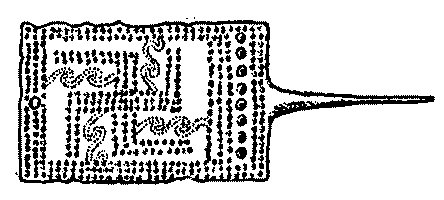Originally published under the auspices of the United States National Museum (now the Smithsonian), this book is the most comprehensive scholarly study of the history and use of the ancient swastika symbol ever undertaken. Its author, Thomas Wilson, participated in the excavation of an Indian burial mound in Ohio where several large copper swastikas were discovered. This unusual find sparked Wilson’s curiosity and led to the research that ultimately became this book.
The swastika symbol occurs in Mesopotamia and India as early as 8000 years ago, and prolifically on artifacts unearthed at the site of ancient Troy. It also appears on hundreds of Greek ceramic objects of the Geometric period, dating between the tenth and seventh centuries BC. Its use by indigenous peoples along the Mississippi and Amazon Rivers before 300 AD has raised serious questions about a possible diffusion from Eurasia. How or when this may have occurred, however, has never been established, nor has the underlying significance of the swastika ever been fully understood.
The front cover illustration is from the book Tree of Life, Mythical Archetype by Gregory Haynes, also published by Symbolon Press. Haynes was the first to observe that the four largest rivers on the four continents bordering the Atlantic Ocean (the Nile, Amazon, Mississippi, and Baltic) stand in relation to each other as do the outer arms of an enormous swastika. In Tree of Life, Mythical Archetype he persuasively argues that ancient navigators mapped these four rivers and derived the swastika from them.

This illustration from THE SWASTIKA by Thomas Wilson shows a series of swastikas engraved upon a bronze ceinture from the Caucasus. Two of the swastikas bear unmistakable images of four rivers running through each of the arms and intersecting at the center. This is consistent with other archaeological evidence indicating that the swastika bears a strong relationship to rivers.

Another illustration from THE SWASTIKA by Thomas Wilson shows a bronze pin from Bavaria.. Four meandering river-symbols parallel the arms of the swastika.
THE SWASTIKA contains over 450 illustrations.

